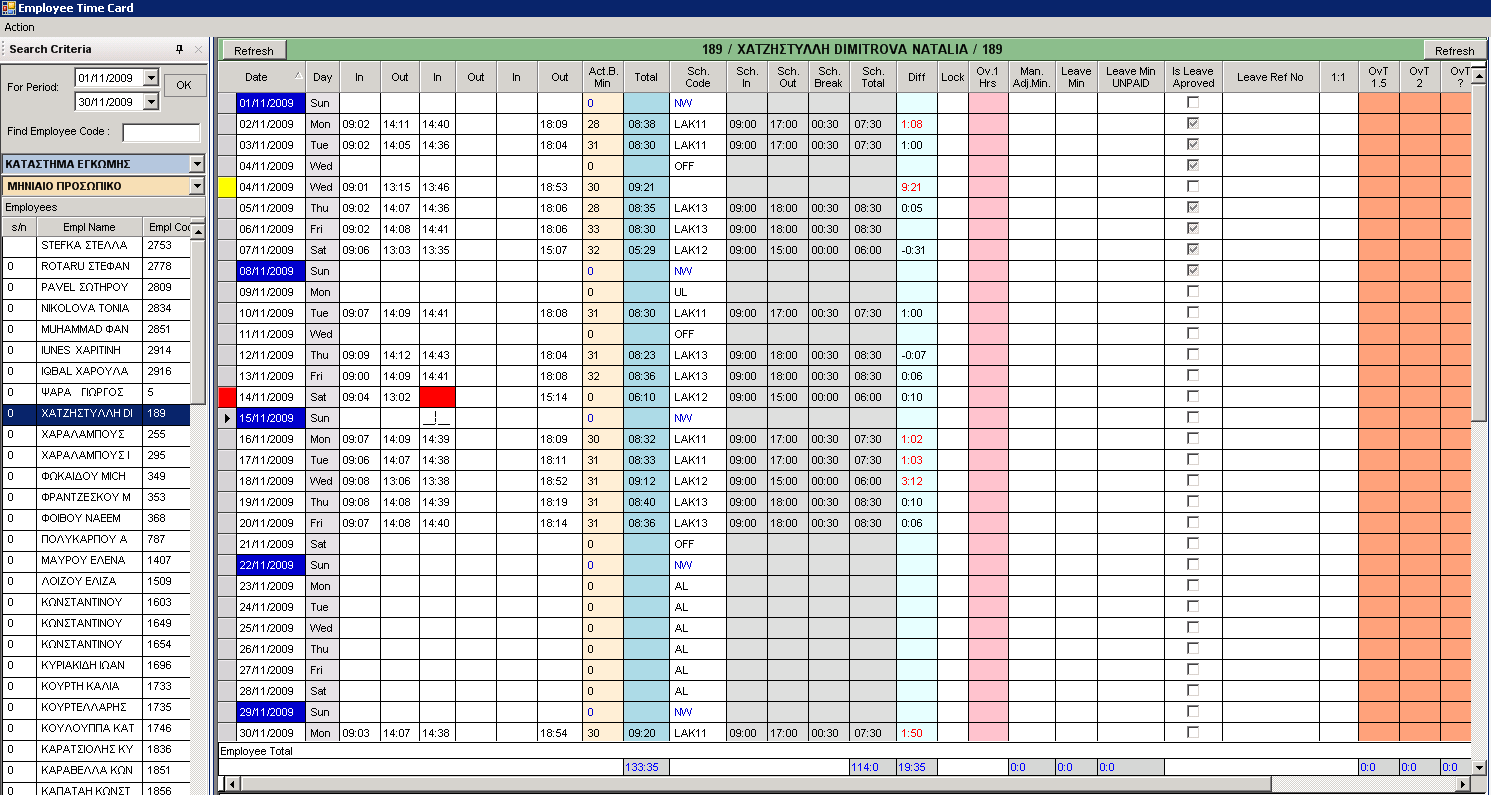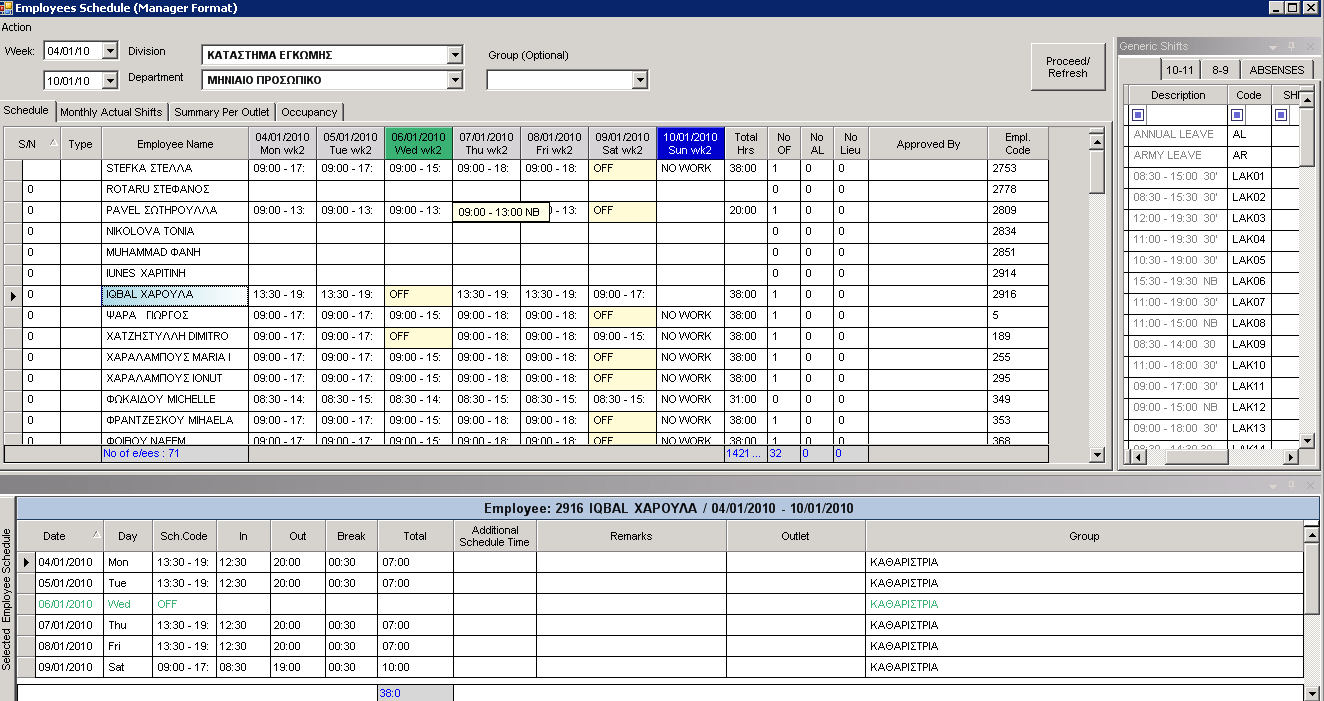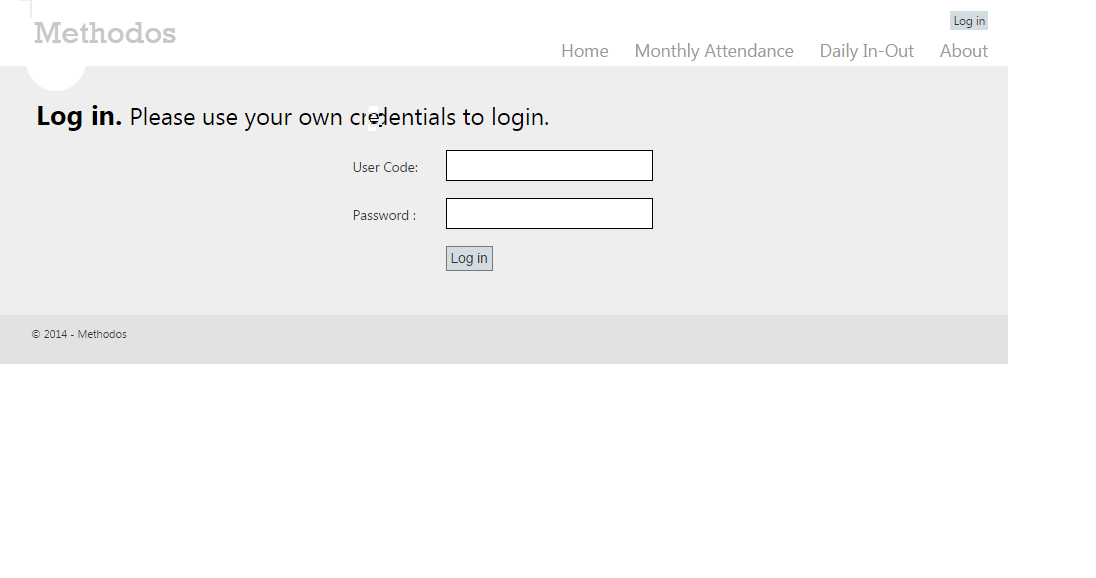Methodos Time & Attendance System
Methodos Time & Attendance
Methodos Time & Attendance System is a system made to automate labor-intensive activity within organizations. It is built around a simple and intuitive interface, which enables companies to manage with precision, all aspects of employee time and attendance.
Project Details
- Integrated with Methodos Payroll Module.
- Web Application Interface for Employees to view their Actual Ins & Outs.
- Ability to import Actual Ins & Outs from iGuard (Time & Attendance) device.
- Employee Schedule
- Employee Time Card
- Finalizes & Prepares data for Payroll Calculation
Taking Control of Your Business
Overview
Time & Attendance system, tracks, and analyzes labor data, and delivers valuable information to company decision-makers. It is capable for controlling an employee's time & attendance, easily accommodates shift swaps, split shifts, overtimes, time - off.
The Methodos Time & Attendance Payroll Solution is a software application that combines employee actual clock in/out with time management and payroll calculation, providing strong and stable security features and fast, accurate but yet flexible management and statistical reporting.
Methodos Time & Attendance Payroll targets companies who wish to automate personnel procedures. It has been designed to significantly reduce, the time taken to manage and process personnel related matters through its well design input forms.
It consists of a proven set of core modules, which are split into two major sections, Time & Attendance and Payroll. Some of these modules are the same for all companies, while others may be tailored to each client's unique business requirements.
Also it incorporates automation with Microsoft Office Products (Word, Excel) to help users perform their day-to-day work or even build their own statistics and reports using widely used programs.
Business intelligence is an important part of successful business today, and being able to have access to all of your data, with the ability to produce meaningful reports and statistics will put you in the best position to make the right decisions.
To maximize the potential return on investment it is important to deploy a system that incorporates all the functionality required avoiding unnecessary system integrations. Combining the time & attendance and payroll module under one umbrella, gives the organization the advantage to have better maintenance on data, avoiding data duplication between the various systems and directs to better system management, internal control, and improve employee management.
Time & Attendance Management
Basic Characteristics
Methodos Time & Attendance System provides a method to collect or enter time and attendance information. This could be via an electronic time clock or direct entry of data through a computer.
Time & Attendance data are reviewed, corrected, and approved by a manager. When deployed with Methodos Time & Attendance devices the interface between devices and the system is transparent to the user (On line).
Scalable, fast, and built around a simple and intuitive interface, Methodos Time & Attendance System enables companies to manage, with precision, all aspects of employee time and attendance.
Key Features
Time & Attendance System displays the actual time clock punches, and performs any validations according to business rules. Actual clock transactions are validated with the actual schedule and prompts any deviations that may exist. It automatically locates work on public holidays, split working schedule, night shifts, overtimes and time - based allowances.
Supports import/export facilities to meet varying requirements in the future, and to enable users to produce different Analysis Reports outside the software.
Enables employee schedule preparation and observation.
Allows the System Administrator to record and manage the different values applicable to the system such as Working Hours per Day, Night Shift Rules, Overtime and Split Rules etc.
Finalizes Time & Attendance data so that no modifications are allowed from this point on as the data will be sent to payroll and creates history tables from which statistical reports will be produced.



